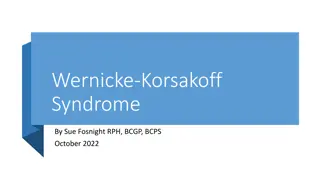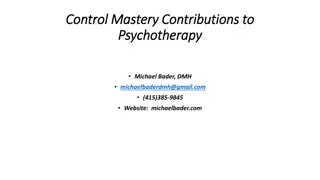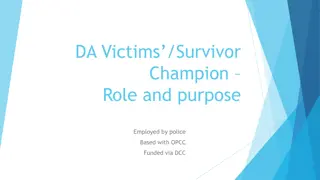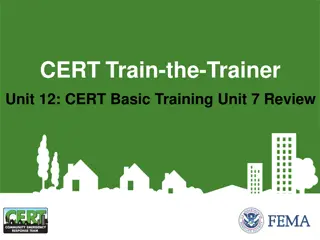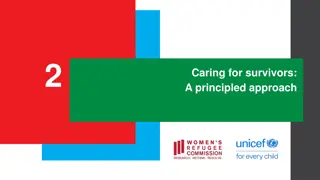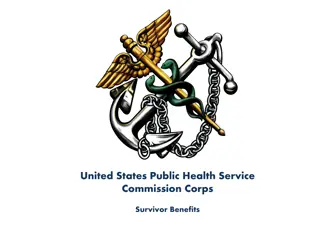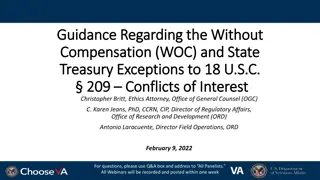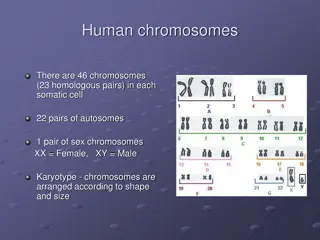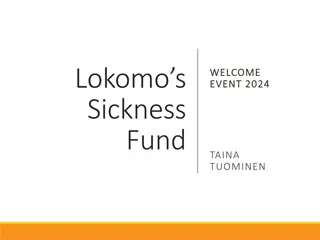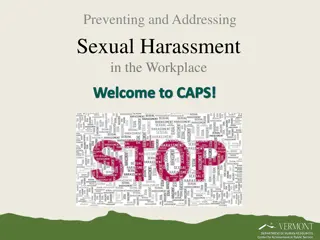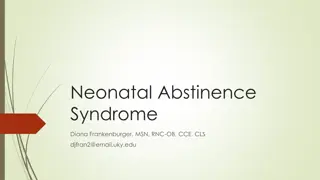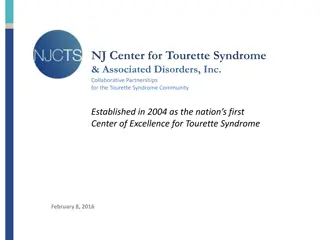Understanding Workplace Survivor Syndrome and Its Impact on Employees
Workplace survivor syndrome refers to the emotional, psychological, and physical effects experienced by employees amidst organizational downsizing. Studies show that survivors face symptoms like fear, insecurity, and reduced morale, leading to decreased productivity and engagement. Recognizing these issues and providing support is crucial in managing the aftermath of layoffs in the workplace.
- Workplace Survivor Syndrome
- Downsizing Impact
- Employee Well-being
- Organizational Change
- Coping Strategies
Uploaded on Sep 14, 2024 | 0 Views
Download Presentation

Please find below an Image/Link to download the presentation.
The content on the website is provided AS IS for your information and personal use only. It may not be sold, licensed, or shared on other websites without obtaining consent from the author. Download presentation by click this link. If you encounter any issues during the download, it is possible that the publisher has removed the file from their server.
E N D
Presentation Transcript
Workplace Survivor Syndrome August 26, 2020 LYNN DULL, LCSW LARRY KAMMIEN, PHD APPLIED LEADERSHIP 1
Agenda Definition of workplace survivor syndrome Understanding change Identifying the feelings and behaviors of workplace survivor syndrome Grief/Loss and survivor guilt Five personalities of workplace survivor syndrome Coping skills 2
Workplace survivor syndrome definition Workplace survivor syndrome, is a term coined by organizational psychologists to describe the emotional, psychological and physical effects of employees who remain in the midst of company downsizing. 3
Is it real? Multiple studies suggest that job cuts are just as hard on the people left behind as they are on those who were downsized. One study showed an increase in alcohol consumption, smoking and workplace injury among layoff survivors. Other studies report depression, plummeting productivity and poor morale among surviving staff. 4
Symptoms and outcomes Survivor symptoms Organizational outcomes Fear Insecurity Decreased morale Uncertainty Reduced motivation Frustration Reduced engagement Anger / Resentment Risk avoidance Unfairness Loss of productivity Betrayal Distrust 5
Curve of Change Pritchard and Associates and William Bridges Vision ENDING NEW BEGINNING Depth Communication Needed: Inspirational 3 Communication Needed: Information 1 Duration TRANSITION 2 Communication Needed: Supportive
A Word About Grief Harvard Business Review ( March 23 , 2020) - The Discomfort You Are Feeling is Grief Acknowledge it/ name it Feeling more than one kind of grief Grief is at both the micro level and macro level Anticipatory grief can be unhealthy and lead to anxiety Ambiguous grief/loss normal due to shifting sands Confusing, disorienting and has a lack of closure 8
Alone: Lost Best Work Buddy For employees who have lost their office best friend or "work spouse," the weeks and months following layoffs can be downright depressing Survivor's guilt, a confused feeling of relief and grief Relief that they have not been laid off Grief for friends who have been laid off Feel undeserving of being spared, which leads to guilt May simultaneously feel happy that they have been spared, which leads to feeling guilty for feeling happy. Psychologists describe this as a toxic mental state. 9
TimeWasting Frozen: Anxious Time-Waster Overwhelmed with anxiety Fear they will be next , freeze up and can drive productivity level way down The Time-Waster Works longer hours than before but gets less done Becomes invisible , hope they may be spared if layoffs hit again Do what they are told but have lost all commitment to the company Motivated less to do good work Disengagement is one of the leading after-effects of layoffs and leads to a workforce of the walking dead 10
Overdrive In Overdrive: The Star Performer Driven by success and accomplishing goals. View layoffs as an opportunity to advance. Feel reaffirmed of their value to the company. Believe fewer colleagues means less competition. Feel anger and resentment if they are overloaded with work and don't feel fairly compensated. Experience poor management, frustration may build to a boiling point, causing them to reach for the escape hatch. 11
Panicked: Ready to Jump Ship Consumed by worry, uncertainty and panic after layoffs Look for other jobs or leave the company Experts say the prolonged feelings of vulnerability leading up to and following layoffs can be more psychologically damaging than actually being laid off. Long-lasting panic often leads employees to act out or seek an escape after work hours 12
Lost: Upended after losing a boss Lost: Upended After Losing Boss Dazed and confused feelings can continue after a layoff The employee has lost trust in the company and the person trusted to guide their work Feeling needy for direction and security Search for authority figure to latch on to. Find a false sense of security , listen to gossip 13
Coping Strategies Remain calm. When layoffs hit, the immediate reaction of those left behind is often panic Recognize that survivor guilt is normal Be honest and efficient Empower yourself Manage your stress utilize additional coping strategies Maintain perspective practice both and thinking Experience a sense of mastery even in the small things that you are doing 14
Coping Strategies Allow yourself time to grieve. Find opportunity within adversity. What are you still doing well despite the stress? What new things have you discovered about yourself or your family? Taking on additional work can be a stressor, take a mental break. Cut yourself some slack, do your best each day, Arrange physical distance between yourself and work, even for a day Avoid office gossip about further cuts 15
Thank You 16
Curve of Change John Kotter, Pritchard and Associates and William Bridges Biz Case/ Urgency Vision Sponsorship ENDING NEW BEGINNING Depth Make Change Stick Communication Needed: Inspirational 3 1 Communication Needed: Information Don t Let Up! Duration TRANSITION Short Term Wins 2 Empower Action Communication Needed: Supportive
Scrambling: Managing a Downsized Team Rule #1- take care of yourself Layoffs can trigger roller-coaster emotions for the boss too. Managers have lost many of their longtime colleagues and have had to let go of several valuable workers (an emotionally grueling task), they have to hold it together and project strength. Managers/leaders are handling their own issues of loss and redistribution of work Many shut down and are not communicating enough with their team. Concern of the prospect of doing more with less, Overwhelming need to fill the gaps by mis assigning or overloading remaining workers. 19
Leaders Communicate thoroughly. Be present, and be inclusive. Engage employees on a personal level. Exhibiting these behaviors may be difficult for leaders because if they ve had to downsize, they may be struggling they may not feel they have time for the personal touch. However, a breach in trust is like a disease that only gets worse with neglect. That means lower productivity, less innovation, more mistakes and potentially more turnover. Trust can be destroyed more quickly than it can be rebuilt, so leaders should plan on committing to this process for the long haul. It s more effective to engage in these actions consistently over a given period of time than to offer one or two grandiose gestures and leave it at that. To help change their behaviors, leaders might think about the people they trust personally. Those relationships likely aren t based on heroic acts, but on countless positive interactions over time. 20
Rebuilding Trust A breach in trust is like an illness that only gets worse with neglect That means lower productivity, less innovation, more mistakes and potentially more turnover. Trust can be destroyed more quickly than it can be rebuilt, Commit to a trust building process for the long haul. Rather than one or two grandiose gestures. It is more effective To help change their behaviors, leaders might think about the people they trust personally. Those relationships likely aren t based on heroic acts, but on countless positive interactions over time 21






